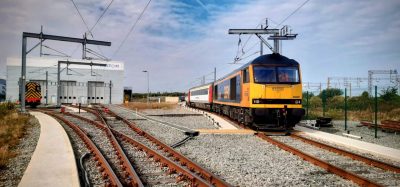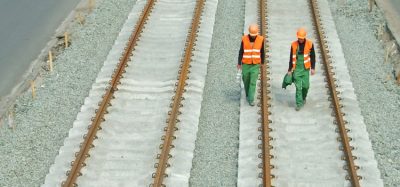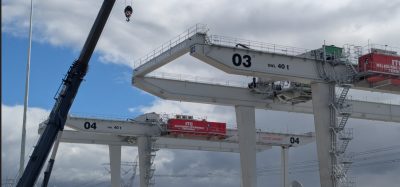Production System 2ooX
Posted: 3 April 2007 | | No comments yet
In the public debate, it is frequently maintained that single wagonload traffic (EV) is in need of urgent and comprehensive reorganisation. There are many and diverse reasons for that claim. On the one hand, the direct competition with road haulage leads to enormous pressure on prices, especially since the enlargement of the EU to the east. On the other hand, the operators of single wagonload traffic are also faced with increasing costs for energy, train paths and infrastructure.
In the public debate, it is frequently maintained that single wagonload traffic (EV) is in need of urgent and comprehensive reorganisation. There are many and diverse reasons for that claim. On the one hand, the direct competition with road haulage leads to enormous pressure on prices, especially since the enlargement of the EU to the east. On the other hand, the operators of single wagonload traffic are also faced with increasing costs for energy, train paths and infrastructure.
In the public debate, it is frequently maintained that single wagonload traffic (EV) is in need of urgent and comprehensive reorganisation. There are many and diverse reasons for that claim. On the one hand, the direct competition with road haulage leads to enormous pressure on prices, especially since the enlargement of the EU to the east. On the other hand, the operators of single wagonload traffic are also faced with increasing costs for energy, train paths and infrastructure.
Railion Deutschland AG (Railion) – the Deutsche Bahn subsidiary responsible for rail freight traffic – endeavoured to tackle these problems by means of the projects MORA-C (market-oriented cargo products) and PRP (Process Redesign Production). Launched in 2001, the projects were aimed at achieving sustainable positive results in the EV sector. However, in view of the dynamic pace of market development, the productivity effects achieved to date are still insufficient.
Despite these adverse circumstances, Railion cannot and is not prepared to discontinue its EV operations. All shunting and service runs are handled in EV, so that without that sector, neither block-train traffic (GV) nor combined traffic (KV) would be able to offer comprehensive customer services. Empty and damaged wagons from GV and KV transports are transferred to single wagonload traffic which takes them to their destination for loading or repair. The new StinnesRailport concept is also based on an efficient single wagonload system. Especially transports destined for Railports abroad are taken to conveniently located single wagonload assembly points where they are bundled and taken to their destinations in the foreign country.
Railion Deutschland AG launched the project ‘Production System 2ooX’ in May 2005 with the objective of making the production of single wagonload traffic (EV) competitive for the future. The new production system went into operation on introduction of the new timetable on 10 December 2006. Railion had designed this project in order to ensure the future competitiveness and profitability of its EV operations in the fiercely competitive transport market. With approximately €1.5 billion sales revenues, the EV operations handled by Railion are still not sufficient to recover costs on a sustainable basis.
The new production system 2ooX is aimed at improving the operating capability of single wagonload traffic while simultaneously offering constant reliability and quality. This is achieved primarily by concentrating long-distance EV services on central corridors between the major marshalling yards. At the same time, the production processes will be increasingly standardised and offered on a stable 24-basis wherever possible. Instead of a high number of direct but infrequent train connections as offered in the past, the single wagonload transports are now bundled at sensible points and transported between the major marshalling yards at shorter intervals. This increases the scope for transporting and transferring the wagons on the individual routes – which generates correspondingly positive effects on reliability and quality.
On introduction of the new timetable for the year 2007, the number of freight train connections for long-distance EV traffic has been reduced by approximately 15% compared with the 2006 timetable, but offers improved efficiency in the network. The new EV timetable is thus more compact and simultaneously satisfies market demand for competitive transport times on time-sensitive routes as before. A crucial aspect for our customers is that the number of freight transport locations has remained constant.
Efficient, modernised marshalling yards (ZBA) form the basis of the new production system. There has been no great change in the total number of ZBAs throughout the network, as providing blanket geographical coverage for our customers remains our top priority. At the same time, capacity utilisation of the major ZBAs will be increased. Wherever possible, we shall endeavour to spread the workload at the yards evenly over 24 hours to ensure better utilisation of the existing resources and to compensate for peaks. To achieve that aim, the trains will run between the major ZBAs on a stable basis: however, this intended stability does not mean that trains will run at fixed intervals, timed to the exact minute – as is the case in passenger services – but that the train movements will be spread as evenly as possible across each 24-hour period.
Nevertheless, a large part of the transport volume will be handled during the night. On the one hand, this reflects the demand of many customers to dispatch their goods primarily in the afternoon and receive consignments in the mornings. It will therefore mainly be a question of achieving the stability of transport departures by means of an intelligent control system within the production process.
The most important message is undoubtedly that the Production System 2ooX guarantees that single wagonload services will still be available for our customers in future. First and foremost, this will be achieved by optimising Railion’s production processes in the EV network, so that it carries at least the same transport volume as at present while using fewer resources – and has the capacity for coping with further growth. The blanket coverage currently available to our customers will therefore be retained. The project work involved in ‘2ooX’ will no doubt also ensure that the limited investment funds available are in fact invested where this is required by the transport structure, for example in the major marshalling yards.
Following the introduction of this change in its production logic, Railion will also contribute to further stabilisation of customer transports, in the interests of better reliability and punctuality figures. This will be achieved simply by means of the increased departure frequency of the trains between the major marshalling yards in the long-distance sector, which consequently increases the opportunities for transporting a wagon, in the same way as the options for passengers in ICE services. Despite the intended standardisation of the production processes inside the system, our target will still be to respond flexibly to the wishes of our customers in the form of logistics/direct train solutions. The new 2007 timetable has been geared to these customer requirements and, for instance, has continued certain sectoral products which impose strict requirements on the transport time, such as ChemSolution, PaperSolution and the SchenkerAutomotiveRailnet transports.
Thanks to the introduction of the production systems 2ooX, we shall succeed in implementing an optimised single wagonload system in the centre of Europe which also fits in well with the international context. Efficient national marshalling yards within this system will also promote ongoing Europeanisation, thanks to optimised links to other countries. This is all the more important for Railion as international import/export and transit traffic already accounts for approx. 50% of its total revenues. Railion will have to ensure in future that the standards demanded by its customers can be enforced throughout Europe. The individual national Railion companies in Italy, The Netherlands and Denmark will be integrated at an early stage of the project work in order to maximise cross-border synergy effects. Work is also currently in progress to improve the coordination of international timetables for single wagonload traffic with other European railways in order to reduce costs and simultaneously raise the quality of train performance. The 2ooX logic means that outbound international transports will increasingly be bundled and dispatched through gateways such as Mannheim, Gremberg and Munich. Transports to South-East Europe, for example, will be grouped in Nuremberg before continuing their journey to the foreign destination. The systematic use of some of the central marshalling yards as gateways will ensure the efficient link-up of the international and national EV systems. This will enable us to respond more flexibly to future requirements resulting from developments in international transports.
Since its introduction on 10 December 2006, the new production system 2ooX has made an important contribution to safeguarding the future of Railion’s single wagonload traffic operations. Concentrating long-distance trains on the central corridors and major marshalling yards, as well as the target of spreading train performance evenly over 24h periods will help to stabilise production workflows, not only in the single wagonload sector. At the same time, this will create scope for flexible responses to customer requests and coping with potential growth. As construction work progresses at some of the central marshalling yards in Germany, further adjustments will be made to the timetable to enable further system optimisation in line with the production logic of ‘2ooX’. In other words, the course has already been set to launch a successful future for single wagonload traffic operations in Germany and in Europe.
About the author
Mr. Hendrik Penner graduated from the Technical University of Berlin in 1995 with economics and technical engineering. After working as a teaching/research assistant at the Institute of Technology and Management, Logistics in Berlin, Mr. Penner changed to the Deutsche Bahn AG, DB Cargo AG, in October 1998. He worked as a Project Manager in several issues dealing with the opimisation of freight traffic. In 2002, he became Head of the Department International Rail Management for North Europe. In 2004 he changed within the Deutsche Bahn AG again to Railion Deutschland AG (ex DB Cargo AG) to become responsible for a department dealing with the optimisation of the single waggonload traffic. Additionally he was the responsibe project manager of the Production System 2ooX and in July 2006 he undertook the role of Head of Operations of the Cargo Unit in Stuttgart.
Global Railway Review Autumn/ Winter Issue 2025
Welcome to 2025’s Autumn/ Winter issue of Global Railway Review!
The dynamism of our sector has never been more apparent, driven by technological leaps, evolving societal demands, and an urgent global imperative for sustainable solutions.
>>> Read the issue in full now! <<<







